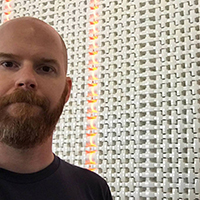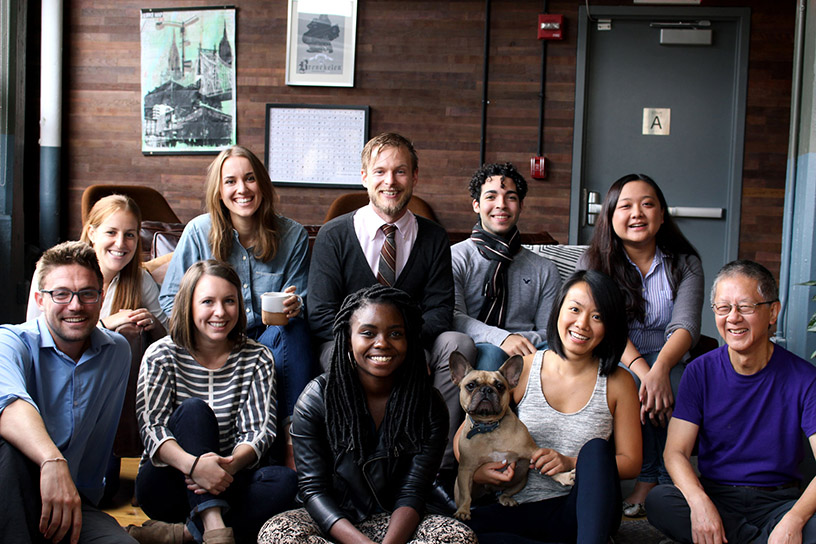
After spending his earlier years working client-side at nonprofits, George Weiner decided that he wanted to direct his time and talent toward helping nonprofits make the best use of technology to better achieve their aims. That led to the creation of Whole Whale. “We’re a social impact tech company that works exclusively with nonprofit and social impact organizations. A large vision of what we are doing is more focused around closing the nonprofit knowledge gap with regard to data and technology.”

Both Weiner’s service-oriented ethos and Whole Whale’s name are informed, at least in part, by the old Inuit idea of using whale catches as fully as possible. “When they landed a whale, they would use every single part, from the blubber to the bone. It was a religious taboo to waste a single part,” Weiner says. “Fast forward to the 1850s, the golden age of whaling in the Massachusetts area, when they were out there just pulling back whale oil for lamp oil in small parts and dumping the whales in the ocean. What I think happens in a time of abundance— which we are definitely at with data, with technology—is that we become kind of wasteful and view things like, ‘Oh my gosh, here is this very simple website that all we need to do is create a donate button and we’re done with it.’”
To that end, Whole Whale is dedicated to providing for their clients a full slate of functionality. “We provide direct services with regard to Google analytics, A/B testing, digital advertising and the like, focused around training the nonprofits we work with, which then allows them to create products and content that serve the larger marketing sector.”
But despite casting a wide net in terms of services offered, they won’t work with just anyone; Whole Whale is committed to working for causes they believe in, for organizations they consider well run, and for jobs they are good at. “We have the luxury of working with clients that get it,” Weiner says. “We actually turn down about half of the people that come in through the door just because we don’t think they have the right time, place, or approach. So when we’re working with clients, sure we can aim to hit a date, but most of our work is done on a retainer basis where we are moving toward a goal that we set and define together. And we have the flexibility to make sure that it happens.”
“We have the luxury of working with clients that get it.”
A quick scan of their client portfolio makes apparent their carefully plotted client-selection criteria and breadth of services. For Planned Parenthood, they provided supplemental assistance to an internal team to get more in-depth analytics from their website. For The Salvation Army, they spearheaded an aggressive recruitment drive and digital marketing campaign to increase enrollment in a universal Pre-K program. For East Side House—a community-based Bronx organization that works to bring quality education to nearby residents with programs ranging from basic literacy to specialized technology training—they helped build a digital presence to promote awareness of their services outside of their immediate area.
Being efficient with what you have to work with should seem an obvious and common practice in the business world, though the reality is often different. But this firm anti-waste approach wouldn’t be the only one of Weiner’s that skews away from conventional, and that’s not an accident. “I’m a big believer that our current business models are really broken, the way we work is really broken, and email really is broken. So I try to throw out much of what industry would tell you,” Weiner says. “My number one goal is: how can we make this hands-down the best possible place to work? It starts from that seed, and then we work through the systems and processes so that people have the framework and ingredients to succeed with regard to delivering products.”
One way he allows that seed to grow is by keeping his employees relaxed and focused on quality, rather than on strict deadlines or speed for the sake of speed. “We have unlimited vacation. We don’t count hours. We don’t count sick days. It’s work-from-home Friday and everyone knows it’s about things getting done, not about hours in the office.”
“Agile is the only thing that makes sense in my world.”
But it’s not like he’s thrown everything out the window; there are still some conventional lessons worth keeping and practices worth adhering to. Including agile development. “I implemented that because it was the only thing that makes sense. The waterfall, data-driven development usually ends in tears. If you think about a product as more iterative, it is just a better approach overall,” Weiner says. “So internally, we divide up in sprints, and we’re on a two-week sprint cycle. We do that for both soft and technical tasks. We actually have two different systems working because I don’t think there is a one-size-fits all; there is the right tool for the right problem. Agile is the only thing that makes sense in my world.”
That world has been primarily driven by Pivotal Tracker, especially as the company has grown. “As we scaled up year over year, I knew we’d have a certain amount of work we’d need to switch. That is the point where we tested out a lot of products. Pivotal Tracker came up and won out of the field. Our need to make sure we deliver quality technical products to our very diverse array of nonprofit clients depends on a very rigid question of, ‘What are we doing in this sprint, and how are we making sure that it gets done and not left off the table?’”

After all, when you are making use of so many whale parts (to follow this metaphor to the deepest depths), you’ll need something to keep everything in line. “Cross-project aggregate views really help. I think we intuitively figured out how to set up a sprint style that mapped with our system and using various tagging categories to make sure that those mapped up. What matters is staff buy in and that you adopt a process that will work.”
So far, this approach seems to be working, and has put Whole Whale on the right path. “Internally we have a very clear vision and five-year goals trajectory for what we hope to achieve, a larger vision of what we are working for,” Weiner says. “We’re growing methodically.”
There are many different variables that make up software teams, but no matter the size or industry, we share a lot of the same challenges. And while Tracker is only a small part of the equation, we’ve begun collecting these stories with the hope that we can all learn from them. See the other case studies here. Want to share your story with us? Get in touch.
Category: Community
Tags: Case Studies